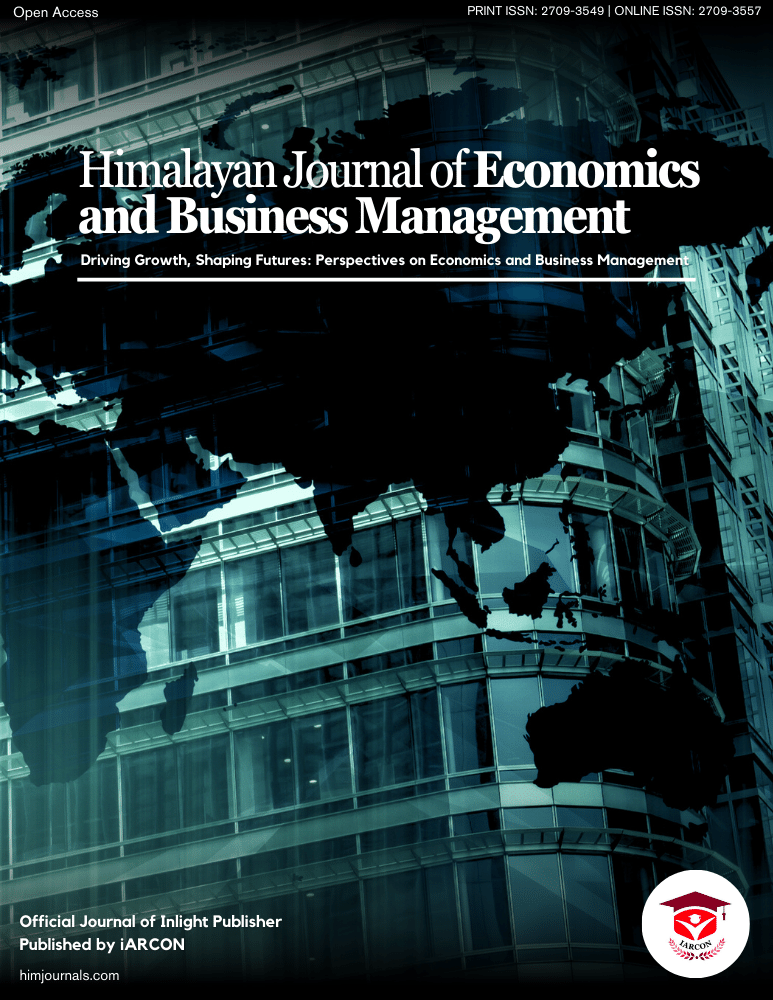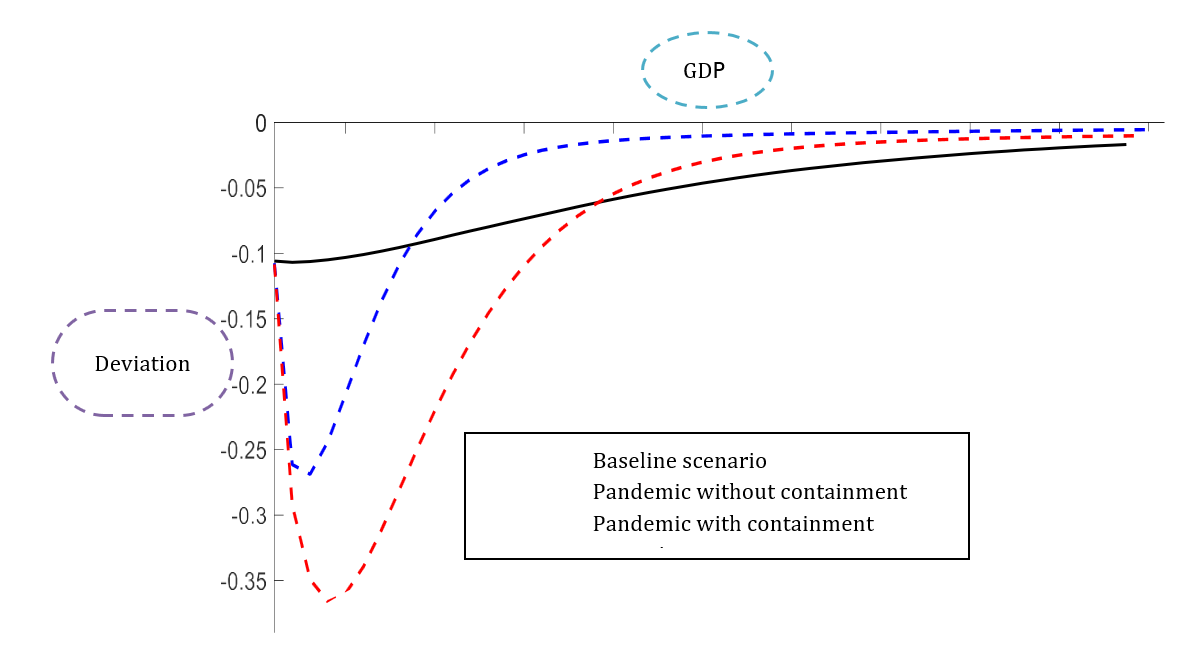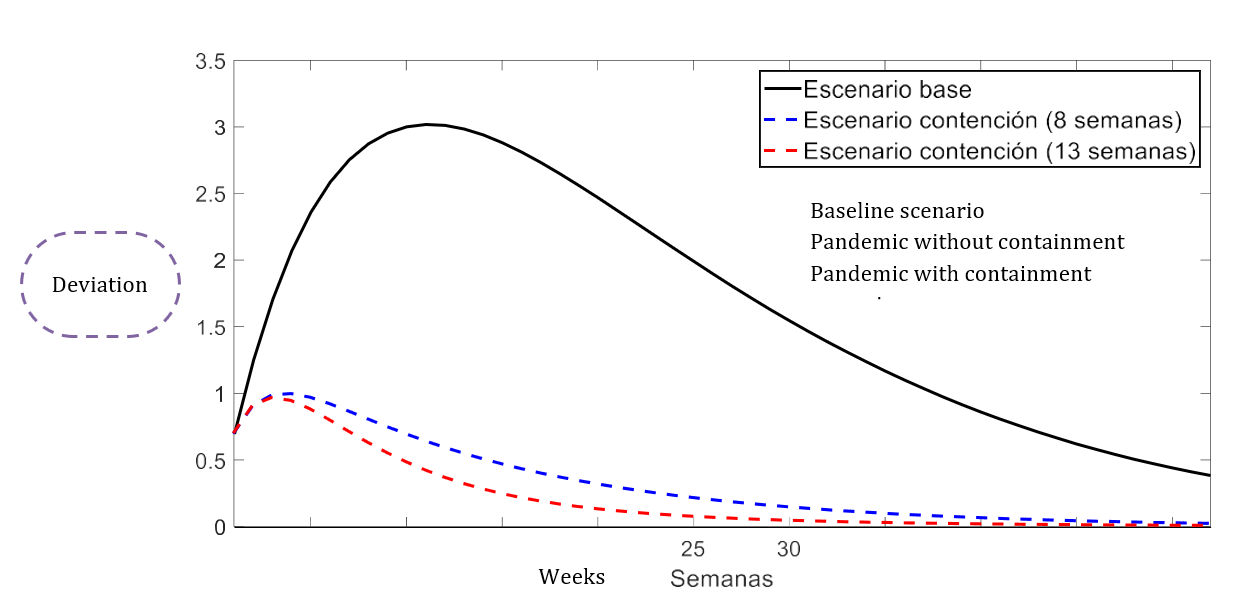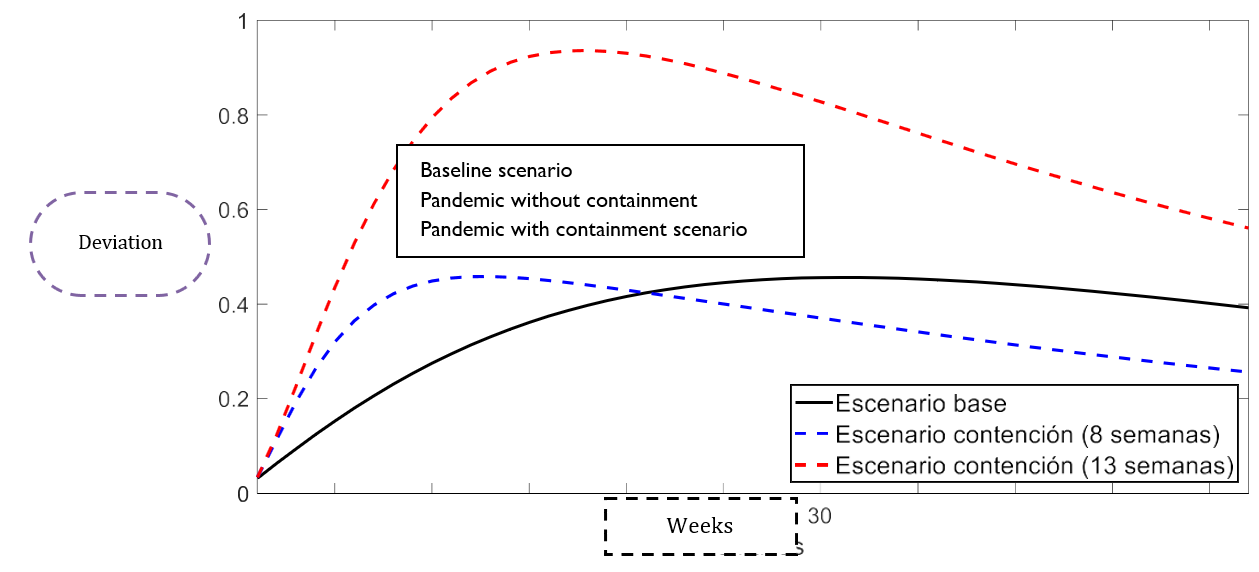Now a day, human lives under the sky are threatened by the outbreak of the new Corona virus disease 2019 (COVID-19), which is wreaking havoc on the global economy and whose expansion has exceeded any pessimistic expectations, arriving on Thursday, April 16, 2020 to register more than two million confirmed cases of SARS-CoV-2 in the world. The pandemic has already left more than 600,000 deaths and has presence in more than 198 countries, according to the account of the American university Johns Hopkins, in one of the most consulted around the world for the analysis of the disease. In this sense, no one doubts the seriousness with which it must face and, consequently, of the changes that must be implemented in economic policies worldwide. Various analysts throughout the world are calling for swift coordinated actions to contain the damage of the global pandemic and to progressively return to acceptable levels of operation of the economy.
However, both economists and epidemiologists have very good sets of models to analyze the evolution and consequences of the pandemic that is hitting the world. Economists have general equilibrium models that allow analyzing in detail not only the effects of restrictions in supply and demand on the markets for goods, services and factors, but also the distributional impacts on households and on vulnerability and poverty, and the collateral effects on public finances, affected by the expansion of spending and the reduction of tax revenues that are surely produced by the effect of the pandemic. They also have dynamic stochastic models (DSGE), which can address those questions related to economic dynamics that are related to the inter-temporal decisions that agents adopt in relation to their consumption, investment, or the dynamics of the labor supply, and that allow to inquire about the joint effects of the pandemic on the future trajectory of economic activity.
Epidemiologists, for their part, have a wide range of SIR models (Susceptible, Infected, Recovered), which analyze dynamic paths of contagion and allow the analysis of issues related to the duration and intensity of the disease, the congruence of health services and hospitals with the required care, and the impacts of the containment measures that are adopted.
But what is not yet common is the consolidation of these models in a comprehensive scheme, which allow the interaction between economic effects and the dynamics of infection. The disease substantially affects economic activity, limiting the supply of goods and services, altering consumer behavior and restricting the work opportunities available to households. In this way, it generates economic and human problems as complex and difficult as the pandemic itself: reduction of sources of income for vulnerable social groups; growing unemployment; fractures in the productive system that affects the capacity of society to generate well-being for citizens.
In response to the pandemic, containment measures must be adopted, which are equally painful for many citizens and disruptive for the productive system: the measures of social distancing imposed in response to the pandemic restricts consumption and the supply of work, limit the effective productivity of companies (even reaching stop its production) and generate additional pain for those who are outside the system of the economic, i.e. informal and “self-employed” workers, those who live from day to day and those who see their social contacts on which their income depended disappear.
The costs of distancing are not marginal: they can translate into significant drops of the production of society; in poverty, misery and despair of helpless groups; and in significant reductions in the future ability to generate wealth and well-being. But we have to take for two fundamental facts: on the one hand, because they can contain the disease, preventing the capacity to care for our patients from overflowing; and, on the other hand, because allow foreseeing a quicker exit from the crisis, preventing the destruction of the apparatus productive, which extended the time of the outbreak.
Thus, the pandemic unleashes important economic effects, which affect the lives and well-being of citizens; and economic measures affect the course of the disease, while defining the severity with which they will impact the population and the future chances of recovery at the end of the nightmare. Given these cross-effects between disease and economy, the need for consolidated economic-epidemiological models is undeniable.
This article, which deals with the construction of a DSGE SIR model that incorporates the complex relationships between disease, containment and economic dynamics, consists of five sections in addition to this: the second section, analyzes the mechanisms through which economic phenomena and epidemiological phenomena are connected; the third, discusses the issue of calibration; the fourth, presents the results of the model; and the fifth, deals with the conclusions and policy recommendations that make it possible to mitigate both the economic effect (livelihoods) and human losses (life).
Transmission Mechanisms
The pandemic spreads progressively in a population, through contagion processes that are typically represented by SIR4 models. In them, contagion is generally approached as a match between the susceptible population and the infected population, whose effectiveness depends on technical parameters associated with the contagion rate (RO), the incubation time of the disease and the time of infection. The models generally incorporate two outcomes, recovery, associated with a high degree of future immunity, and death, which depends on the fatality rate of the disease [1].
But as it spreads, the pandemic produces disruptive effects on economic activity, which can be classified into three broad categories:
Displacements in consumer demand, which adjusts upwards in some consumptions that could be considered precautionary, or downwards in all other adjustable items of consumer behavior, with a probably negative total net effect
Displacements in the job offer, due to the inability to work or due to precautions against the contagion that some people take, avoiding the exposure to risk to some degree
And temporary reductions in the supply of goods and services (what economists call a supply shock), either due to the indispensable adjustments in working hours or work habits, due to the security measures adopted to preserve the safety of people or by precautionary measures taken in anticipation of sharp reductions in the demand for those goods or services that may be considered vulnerable in a scenario of expansion of the disease
Given the pandemic, governments are forced to implement containment actions, which are generally expressed in social distancing measures. These measures seek, on the one hand, to slow down social contacts and, on the other, to protect particularly vulnerable population groups from the point of view of the disease. The purpose of these measures is threefold: on the one hand, to prevent the infection from exceeding the hospital care capacity available to the country; but also, reduce the contagion rate; and to minimize fatal outcomes, decreasing the fatality rate. The reduction of the contagion rate is achieved in two ways: By reducing interpersonal contacts and the probability of contagion; and by reducing latency times of the disease, ensuring that early detection allows the patient to be isolated and neutralize their contagion capacity [2].
But just as distancing reduces the opportunities for contagion, it also reduces the opportunities for consumption and work. In this sense, it operates as a rationing, which limits the consumption that the subject can access and the job opportunities that they can take advantage of. And of course, it reinforces the supply shock suffered by the productive sector, because it imposes additional conditions on productive activity, and it fractures productive chains, making relevant restrictions and bottlenecks.
Thus, the expected effect of containment measures is profoundly disruptive from an economic point of view, but to the extent that contagion decreases and fatality is reduced, it is also the shortest path to future recovery [3].
The DSGE-SIR model complements the conventional DSGE model, which incorporates households, companies, investors and government, from a small open economy, with a SIR module and a module of economic-epidemiological interactions5. The SIR module operates as a Markov process, using a transition matrix between health states, with variable coefficients, to reflect the contagion process. The transition matrix is calibrated for two states (healthy and diseased), and has the form:






